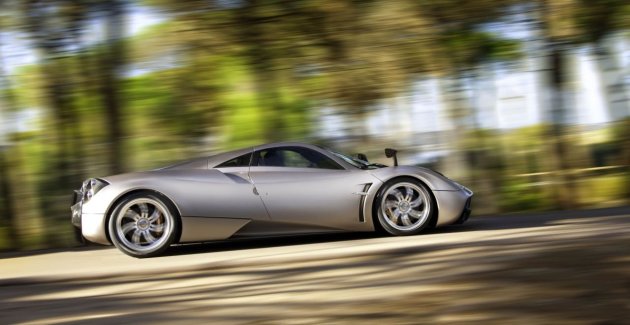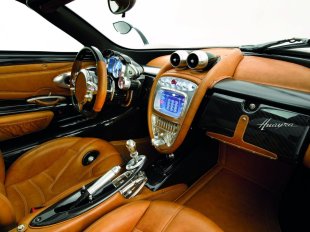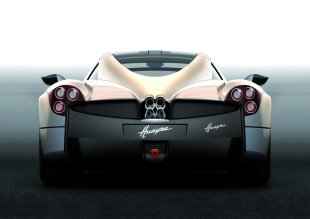Volkswagen AG (VOW) agreed to buy the 50.1 percent stake in Porsche SE’s automotive business that it doesn’t already own for 4.46 billion euros ($5.6 billion), ending a seven-year takeover saga that divided two of the most powerful families in Germany.
VW was able to proceed with the transaction two years earlier than planned after reaching an agreement with German tax authorities, it said late yesterday. The cash deal is based on an equity value of 3.88 billion euros and also includes what the Porsche holding company would have received in dividend payments and half of the forecast synergies from the combination.
The agreement means Wolfsburg, Germany-based VW can now fully fold the Porsche automaking business into its stable of 12 brands, which range from Audi luxury sedans to Ducati motorbikes. The purchase helps VW Chief Executive Officer Martin Winterkorn in his quest to pass Toyota Motor Corp. and General Motors Co. and become the world’s largest automaker by 2018.
“It’s very positive for VW as they get 50 percent of an asset they value at 26 billion euros on their own books for 4.46 billion euros,” said Erich Hauser, a Credit Suisse analyst in London. “If I was a Porsche shareholder, I’d feel slightly short changed though.”
VW gained as much as 8.20 euros, or 6.4 percent, to 136.20 euros and was up 6.1 percent as of 11:51 a.m. in Frankfurt trading. The shares have climbed 17 percent this year, valuing the carmaker at 60.7 billion euros. The Porsche SE (PAH3)holding company’s stock fell as much as 1 percent and was down 0.5 percent to 41.81 euros, giving it a market value of 12.8 billion euros.
Failed Takeover
The two companies agreed to combine in 2009 after Stuttgart-based Porsche racked up more than 10 billion euros of debt in an unsuccessful attempt to take over Europe’s largest carmaker. VW said it expects Porsche’s automaking business, which it values at more than 20 billion euros, to be fully consolidated in its accounts from Aug. 1.
“Porsche and Volkswagen belong together,” Winterkorn said at a press conference today at VW headquarters in Wolfsburg. “By working with one another we will raise the company to a new level. We are on the way to being number one.”
Porsche’s earnings contribution for this year will be mainly offset by the purchase price, VW said. By revaluing its existing shares in Porsche, VW expects to book a non-cash gain of more than 9 billion euros and predicts a liquidity drain on its own automaking division of about 7 billion euros. The agreement will result in 320 million euros in additional synergies due to the earlier completion.
Lower Tax Bill
Volkswagen is paying the purchase price, plus transferring one share to Porsche, in a move that allows the carmaker to classify the merger as a restructuring rather than a takeover. Doing so means VW avoids a possible tax bill on the purchase of about 1 billion euros that it might have had to pay by completing the merger before 2014. The agreement with tax authorities has been criticized by some German politicians.
VW will now pay “well over” 100 million euros in transaction taxes on this deal, Chief Financial Officer Hans Dieter Poetsch told reporters at the press conference.
The agreement simplifies the cross-shareholdings between the companies by leaving the Porsche SE holding company as the largest stakeholder in VW, with 50.7 percent of the common stock, and at the same time folding the Porsche automaking operations fully into the VW group. The holding company plans to use proceeds of about 2.4 billion euros from the sale to invest in materials for the auto industry, real estate and energy trading.
Porsche Lawsuits
The two companies had been working on a full-blown merger since 2009, when Porsche failed in its attempt to take over VW, which would have eliminated the holding company and given Porsche shareholders a direct interest in VW. That goal was scrapped in September because of the lawsuits in the U.S. and Germany, claiming the carmaker secretly piled up VW shares.
After Porsche announced in 2008 that it controlled 74.1 percent of VW, partly through options, and was seeking an eventual takeover, the shares surged as short sellers raced to buy shares borrowed in a bet that VW would fall. Porsche has repeatedly denied any wrongdoing.
“We have to reckon that the situation with legal proceedings will persist for a while,” Poetsch, who is also the Porsche holding company’s CFO, said today. “There is no contractual ground for a full merger today. The transaction structure makes sure that the risks for the lawsuits are clearly on the Porsche SE side.”
Family Feud
Porsche’s attempt starting in 2005 to take over Volkswagen, which makes more cars in a week than the sports-car maker does in a year, split the controlling family. Ferdinand Piech, VW’s chairman, crossed his cousin Wolfgang Porsche to thwart the plan, which ultimately fell apart after Porsche’s debt rose in the midst of the financial crisis.
“VW and Porsche will be able to better cooperate in the future, devise a common strategy and reap synergies,” Lower Saxony Prime Minister David McAllister said today. Lower Saxony is the second-largest VW shareholder with a 20 percent stake.
Piech, 75, the former VW CEO who was elected to a third term as chairman in April, has since solidified control of Volkswagen. His wife, Ursula, took a seat on the company’s supervisory board earlier this year. In April, VW agreed to acquire Italian motorcycle maker Ducati, fulfilling Piech’s vision of a company with a range spanning two-wheelers to 50-ton trucks. VW also controls truck makers MAN SE (MAN) and Scania AB. (SCVB)
“To have the Porsche clan as owners and the anchor shareholder is good for Volkswagen and for Germany,” said Christoph Stuermer, an IHS Automotive analyst in Frankfurt. “This has changed the cultural heart of the company. Volkswagen has become substantially stronger and long-term oriented.”
.jpg)












.jpg)
.jpg)



.jpg)
.jpg)